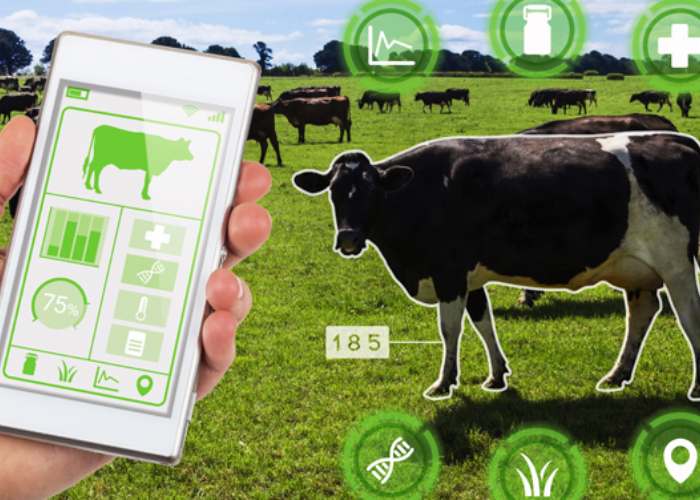Digitalizing a Barn: Innovation in the Livestock Supply ChainBY ANTONIO PICASSO
- 2 July 2024
- Posted by: Competere
- Category: Senza categoria

When discussing digital transition, the mind immediately goes to factory automation. However, technological innovation is also revolutionizing more traditional sectors such as agriculture and, in particular, the livestock supply chain.
Article published in Italian on Agenda Digitale
The belief that there is no dialogue between the primary sector and the ongoing digital revolution is an easily disproven cliché. This misconception leads to the idea that agriculture’s relationship with new technologies is not much different from that of other sectors. The seventh general census of agriculture by Istat shows that more than 15% of livestock farms are digitalized, a percentage that rises to 71.6% for larger farms with over one hundred adult heads. As in many other sectors, large companies are more responsive to change, while SMEs are often more reluctant or cannot afford the investment.
This highlights the need to accelerate the introduction of new technologies in the livestock sector. This is clearly stated in the report “The Digital Transition of Italian Meat Supply Chains,” produced by the Foundation for Digital Sustainability, with the scientific contribution of the Carni Sostenibili study center.
LIVESTOCK SECTOR IN EVOLUTION: NUMBERS AND TRENDS
Today, Europe has 9.1 million farms, of which 3.2 million are livestock and mixed farms. Overall agricultural production in European countries amounts to 537.5 billion euros, with 206 billion coming from animal production.
In Italy, there are over 160,000 livestock farms, about 130,000 specialized in cattle breeding, 28,000 in pig farming, and almost 7,000 in the poultry sector. With its half a million employees, the Italian livestock sector is worth 33 billion euros. However, we do not excel in consumption. Against 3.69 million tons of meat produced, which places Italy fifth in Europe, we remain second to last in per capita meat consumption.
This overall picture serves as a starting point for reflection on the supply chain, both in terms of digitalization and productive efficiency. Digital sustainability in meat farming implies optimizing resources, improving animal welfare, and reducing the ecological footprint of the entire supply chain.
MEAT SUPPLY CHAIN AND DIGITALIZATION: ISSUES
The report shows that meat supply chains today, despite investments made under Industry 4.0 and resources deployed by the PNRR, could benefit significantly from a digital sustainability-oriented approach. However, the impact remains marginal.
The lack of pervasive infrastructure, the limited diffusion of a digital-oriented culture in the sector, and the difficulty of managing a change process that, to be effective, must touch all links in a complex and multifaceted value chain are the obstacles still to be overcome. These are countered by experiences, models, and cases of excellence worthy of dissemination.
THE “SMART MEAT 2030” MANIFESTO
The “Smart meat 2030” Manifesto (Sustainable management and advanced responsible technologies for meat ecosystems and agri-food tracking) aims to be a sort of industrial deal with which the supply chain defines its digital transition path. “Smart Meat 2030” was created to support Italian livestock companies in their journey towards the European 2030 sustainability goals, valuing digital technology and digital sustainability as pillars of meat production supply chains. From building data-driven ecosystems and adopting advanced technologies to monitoring emissions and animal welfare, as well as addressing cybersecurity issues and the strategic role of institutions.
DIGITAL TECHNOLOGIES FOR LIVESTOCK
Digital technologies can improve the allocation of physical, natural, and human capital in meat supply chain companies, reducing costs and increasing efficiency. Advanced IoT systems monitor the conditions of animals and the environment in real-time, allowing timely interventions that improve animal health and welfare and reduce the need for pharmacological treatments.
Technologies such as advanced telemetry and predictive analysis are employed to monitor animal health and behavior, with sensors collecting data on vital parameters and activities, helping to prevent diseases and improve living conditions. This approach not only positively impacts operational sustainability but also improves the quality of the finished product, as shown by studies indicating a 20% decrease in mortality rate and a 15% reduction in antibiotic use.
The challenge is to use this information to increase production efficiency, reprogramming systems digitally by pursuing the intelligent intensification of agro-livestock systems.
.
Image credits: courtesy of Ruminantia >>>
